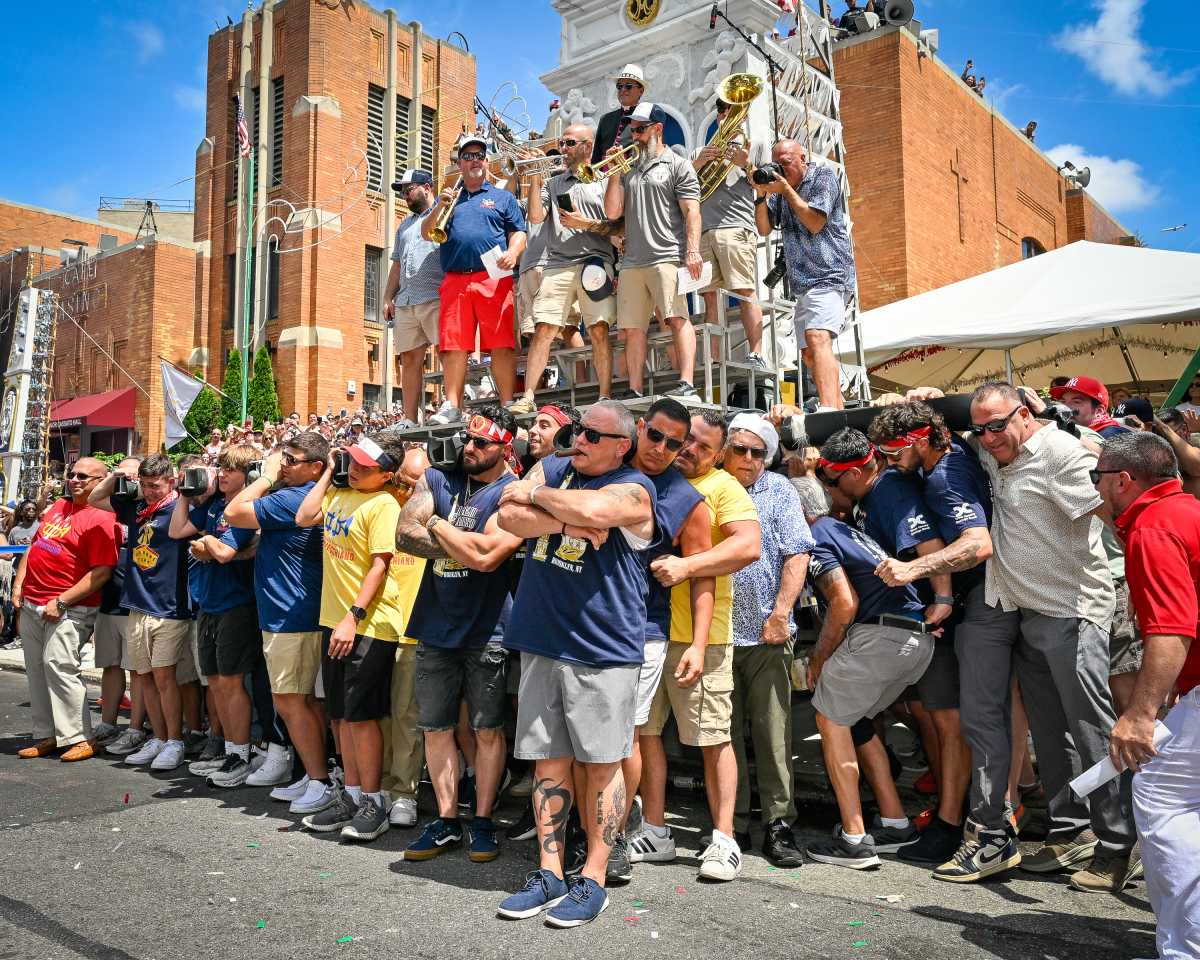By Albert Amateau
The months of worry for Independence Plaza North tenants in Tribeca ended on Tuesday when tenant association leaders reported an agreement with the owner, Laurence Gluck, who intends to take I.P.N. out of the Mitchell-Lama program at the end of June, that will allow tenants to stay in their apartments.
Nearly 500 I.P.N. residents at the March 8 meeting gave Neil Fabricant, the tenants association president, a standing ovation when he said, “Nobody is ever going to have to leave because of not being able to afford living here.”
The jubilation was based on the assumption that the 22-page agreement reached between Gluck, who acquired the 1,329-unit complex last autumn, and the tenants association, would be signed in a matter of days.
Fabricant credited a City Council bill that would make it expensive and difficult for landlords to leave the Mitchell-Lama program with exerting political pressure that led to the agreement, and introduced City Council Speaker Gifford Miller, lead sponsor of the bill.
A standing ovation for Miller included shouts of “Mayor — Miller for mayor.”
Fabricant also credited the tenants association consultant, Ethan Geto, and attorneys Allan Epstein and Arlo Chase of Manatt, Phelps & Philips with key roles in the negotiations. He also credited Chad Marlow, a lawyer and political activist in the Village, with writing an early version of the Council bill.
Under the agreement all tenants would have to apply for enhanced vouchers, known as sticky vouchers, available for tenants in projects exiting the Mitchell-Lama affordable-rent program. Eligible tenants of record who earn less than 95 percent of family median income — $41,000 for a single person and $60,000 for a family of four — will receive vouchers and pay 30 percent of their income for rent. The federal Department of Housing and Urban Development, which funds the voucher program, will pay the landlord the difference between the voucher rent and market rate.
An estimated two-thirds of I.P.N. tenants are expected to be eligible for vouchers.
The 300 or so tenants not eligible for vouchers will be in a city-regulated Landlord Assistance Program, which will set their rents at the present levels. Yearly increases for the first nine years will equal increases set by the city Rent Guidelines Board, the agency that sets rents for rent-stabilized apartments. In the 10th, 11th and 12th years of a LAP tenant’s residency, the rent will be what the Rent Guidelines Board decrees plus 3.5 percent. After that, the rent will be the Guidelines Board rent plus one percent.
But unlike renters in rent-stabilized buildings, LAP tenants will not go to market rents when their rent exceeds $2,000 per month.
Voucher tenants must also conform to appropriate apartment-size standards geared to the size of their families. But if, for example, a couple whose child has grown and left the family, are in a two-bedroom apartment but belong in a one-bedroom apartment, the landlord must find them an appropriate-size apartment at I.P.N. or permit them to live in the bigger apartment and absorb the difference in rent.
Despite their elation at what has been called the best deal of any tenants in the city in projects leaving Mitchell-Lama, I.P.N. tenants uttered a groan at the prospect of parking fee increases phasing up to market rate in five years.
Voucher tenants will remain in the voucher program even if their income increases. “So I guess if you’re a voucher tenant and begin making $200,000 a year, you might want to move,” Fabricant quipped. LAP tenants will also remain in that program. But should any of the tenants leave an apartment, the apartment will go to market-rate rent. However, under the agreement, blood relatives and registered domestic partners already living in an apartment for the previous two years will be able to inherit the apartment at the agreed rents.
The big uncertainty is the future of the voucher system. The Bush administration’s proposed budget for next year would restructure the entire federal housing subsidy system. While a spokesperson for HUD said recently that the proposed new system would cover as many tenants as the present one, critics say the new system would cover far fewer people over the next nine years.
Fabricant told I.P.N. that the next lobbying effort will be to get the city to support the vouchers if the federal subsidy lapses.
The I.P.N. Mitchell-Lame deal was hailed by tenants as an “unprecedented victory.” However, Heywood Towers on the Upper West Side on Amsterdam Ave., a 188-unit residential building that left the program last year, has a similar agreement with its landlord, Seavey Organization. West Village Houses in Greenwich Village and Land’s End One on Clinton St. on the Lower East Side are also negotiating with landlords who plan to leave the Mitchell-Lama program.






































